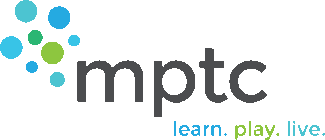Are you wondering what milestones your child should be meeting for speech, motor capabilities, and social interaction? Take a look at this list of milestones and see if your child needs speech, physical therapy, feeding therapy or occupational therapy.
14 Months

- Creeps upstairs on hands and knees
- Walks 10 feet with good balance and heel-toe pattern
Helpful Hint: Watch to see if your child is always leading with one leg when going up the stairs. Try to encourage the use of both legs leading.

-
Makes a stack of 2 blocks
-
Points at objects with index finger, keeping other fingers toward palm
-
Rolls a ball to you

-
Plays alone or alongside others
-
Hands things to others
-
Indicates desired objects through pointing

- Continues trying new mashed foods
- Might attempt to eat soft meats

-
Prefers people who are familiar, strangers may cause anxiety
-
Can entertain self for few minutes at a time
-
Can exhibit a wider range of emotions (love, frustration, jealousy)

- Textured sensory balls
- Books
15 Months

- Creeps upstairs on hands and knees
- Walks 10 feet with good balance and heel-toe pattern
Helpful Hint: Watch to see if your child is always leading with one leg when going up the stairs. Try to encourage the use of both legs leading.

-
Makes a stack of 2 blocks
-
Points at objects with index finger, keeping other fingers toward palm
-
Rolls a ball to you

-
Plays alone or alongside others
-
Hands things to others
-
Indicates desired objects through pointing

- Continues trying new mashed foods
- Might attempt to eat soft meats

-
Prefers people who are familiar, strangers may cause anxiety
-
Can entertain self for few minutes at a time
-
Can exhibit a wider range of emotions (love, frustration, jealousy)

- Textured sensory balls
- Books
16-18 Months

- Walks fast
- Walks backward 5 steps
- Walks downstairs with support of one finger- non alternating
Helpful Hint: If your child is still having trouble with balance while walking, it may be a good time to talk with your therapist about potential orthotic options for extra support to the foot and ankle.

-
Turns a small knob
-
Puts large round pegs into pegboard
-
Helps dress and undress self
-
Copies housework or activities you do (i.e. brushing hair)
-
Builds a 3-block tower
-
Removes socks without help

-
Adds new simple words to vocabulary
-
Imitates animal sounds
-
Vocalizes for fun
-
Develops a sense of humor
-
May refuse to share toys and use “mine!”
-
Identifies 3 body parts

-
Likes messy play activities

-
Drink from a cup and sets it down without much spillage
-
Bites food well
-
Begins to eat some coarsely chopped foods
-
Eats chopped raw vegetables by 18 months
-
May refuse some foods
-
Eats with lips closed at times
-
Less saliva loss than when younger

-
Imitates simple games (ex. Rolling ball back and forth)
-
Will repeat experience that provokes laughter
-
Limited patience
-
Enjoys helping complete simple tasks
-
Interested in give and take games
-
Struggles to share toys with peers/playmates

-
Blocks
-
Simple puzzle with large pegs & background image
-
Stacking toys (like multi-sized stars or donuts on a peg)
-
Walking toys like lawn mower, vacuum
19-20 Months

-
Runs forward 10 feet
-
Stands tandem on a line for 2 seconds
-
Kicks ball 3 feet without direction
-
Throws a ball overhand 3 feet
-
Rides a push bike
Helpful Hint: Tandem standing is standing with one foot in front of the other with heel and toe touching. Practice in front of a mirror and with colorful dots or stickers for visual cues for foot placement.

- Gets a spoon
- Drinks from a cup independently
- Turns one or more regular book pages without help
- Stacks a 4-block tower
- Zips and unzips easy zippers
- Uses grasp with thumb towards paper
- Sits on a toilet with assistance
- Still needs help to brush teeth

- Identifies 3-4 body parts
- Uses 10 words
- Imitates sounds and noises more clearly
- Starts to communicate needs with words (i.e. “up”, “more”)

- Drinks from a cup without any help
- Improves chewing patterns and jaw movements in eating
- Scoops food with a spoon, may spill at times

-
Seeks to be more independent, will try things on their own
-
Enjoys being taught to help with simple daily activities (ex. cleaning)
-
Imitates some social behaviors (ex. celebrating)
-
Demonstrates pride to complete task

- Push bike or ride on toy
- Books
